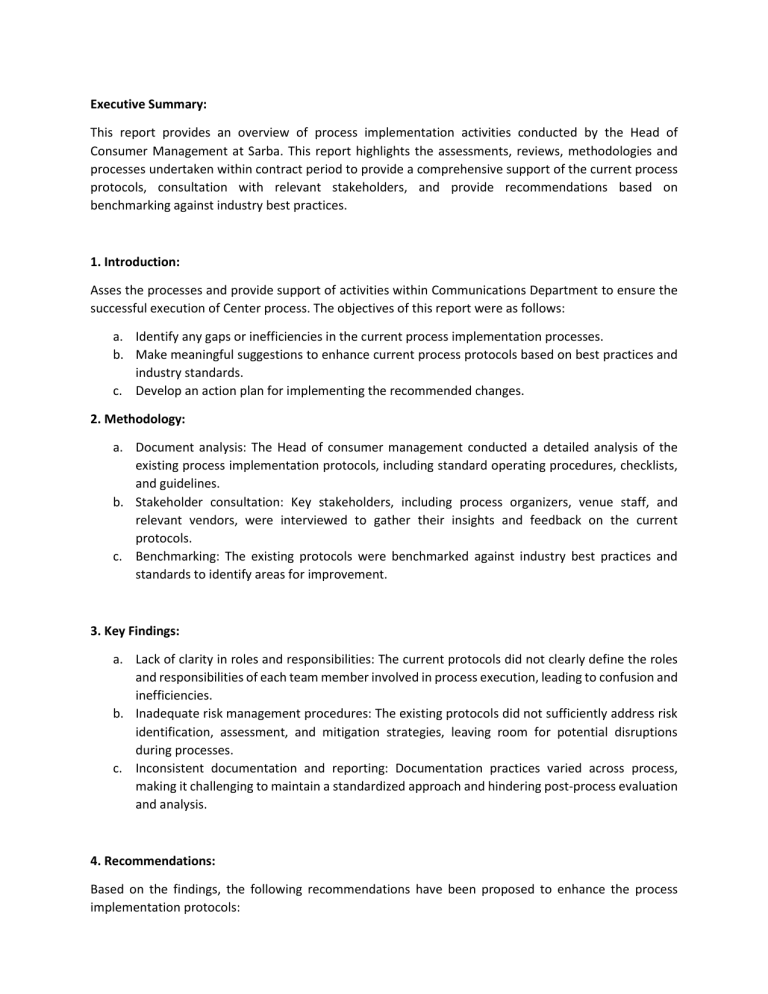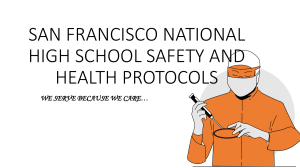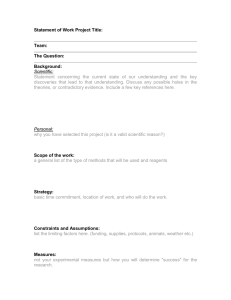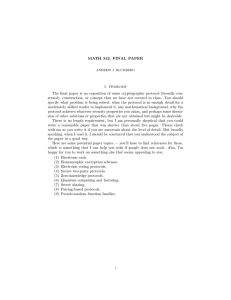
Executive Summary: This report provides an overview of process implementation activities conducted by the Head of Consumer Management at Sarba. This report highlights the assessments, reviews, methodologies and processes undertaken within contract period to provide a comprehensive support of the current process protocols, consultation with relevant stakeholders, and provide recommendations based on benchmarking against industry best practices. 1. Introduction: Asses the processes and provide support of activities within Communications Department to ensure the successful execution of Center process. The objectives of this report were as follows: a. Identify any gaps or inefficiencies in the current process implementation processes. b. Make meaningful suggestions to enhance current process protocols based on best practices and industry standards. c. Develop an action plan for implementing the recommended changes. 2. Methodology: a. Document analysis: The Head of consumer management conducted a detailed analysis of the existing process implementation protocols, including standard operating procedures, checklists, and guidelines. b. Stakeholder consultation: Key stakeholders, including process organizers, venue staff, and relevant vendors, were interviewed to gather their insights and feedback on the current protocols. c. Benchmarking: The existing protocols were benchmarked against industry best practices and standards to identify areas for improvement. 3. Key Findings: a. Lack of clarity in roles and responsibilities: The current protocols did not clearly define the roles and responsibilities of each team member involved in process execution, leading to confusion and inefficiencies. b. Inadequate risk management procedures: The existing protocols did not sufficiently address risk identification, assessment, and mitigation strategies, leaving room for potential disruptions during processes. c. Inconsistent documentation and reporting: Documentation practices varied across process, making it challenging to maintain a standardized approach and hindering post-process evaluation and analysis. 4. Recommendations: Based on the findings, the following recommendations have been proposed to enhance the process implementation protocols: a. Clearly define roles and responsibilities: Develop a comprehensive document outlining the roles and responsibilities of each team member involved in process execution, ensuring clarity and accountability. b. Strengthen risk management procedures: Establish a standardized risk management framework that includes proactive identification, assessment, and mitigation strategies, along with contingency plans for potential disruptions. c. Implement standardized documentation practices: Develop a set of standardized templates and guidelines for documentation and reporting, ensuring consistency across process and facilitating post-process evaluation. 5. Action Plan: To implement the recommended changes, the following action items have been identified: a. Conduct a training session to communicate the revised roles and responsibilities to all relevant team members. b. Develop a comprehensive risk management policy and distribute it to the process team for implementation. c. Create standardized documentation templates and guidelines and distribute them to the process team, ensuring their adoption in future process. 6. Conclusion: The review of the process implementation protocols highlighted.


